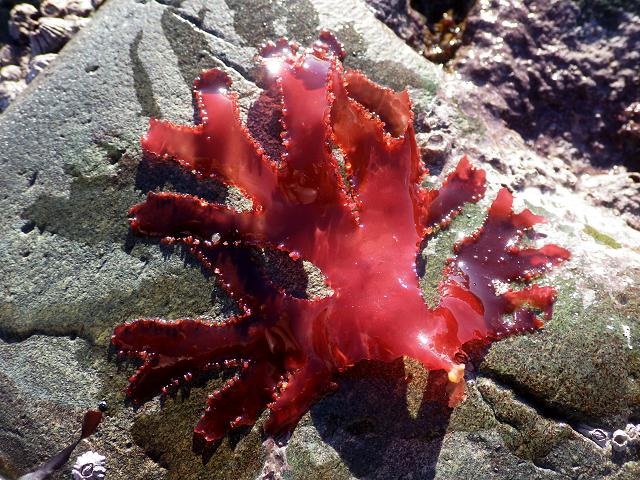
APHOTOMARINE
An educational resource dedicated mainly to the photography
and diversity of marine life that can be found in coastal waters
and intertidal areas of Great Britain and Ireland by David Fenwick.

Metacallophyllis laciniata (Hudson) A. Vergés & L. Le Gall, 2017 - Beautiful Fan Weed (Red seaweeds)
Scroll down and rollover titles to change screen image or click on title to view image.
Metacallophyllis laciniata syn. Callophyllis laciniata
Beautiful Fan Weed
Metacallophyllis laciniata
- specimen out of water 1
Beautiful Fan Weed
Metacallophyllis laciniata
- part of frond showing edge 1
Beautiful Fan Weed
Metacallophyllis laciniata
- edge of frond 1
Beautiful Fan Weed
Metacallophyllis laciniata
- edge of frond 2
Beautiful Fan Weed
Metacallophyllis laciniata
- in-situ / habitat 1
Specimen above found subtidally on the edge of a large rock, on an extremely low tide, at Albert Pier Reef, Penzance, Cornwall. 22.01.15.
Beautiful Fan Weed
Metacallophyllis laciniata
- washed-up / bleached 1
Beautiful Fan Weed
Metacallophyllis laciniata
- washed-up / bleached 2
Beautiful Fan Weed
Metacallophyllis laciniata
- washed-up / bleached 3
Beautiful Fan Weed
Metacallophyllis laciniata
- washed-up / bleached 4
Beautiful Fan Weed
Metacallophyllis laciniata
- washed-up / bleached 5
Beautiful Fan Weed
Metacallophyllis laciniata
- washed-up 1
Specimens from a middleshore pool at Tavis Vor, Mousehole, Cornwall. 21.09.10; washed up at Albert Pier reef, Penzance, 01.08.11; at Roskilley near Newlyn, Cornwall, 04.08.11; also at Wembury, Devon, 19.09.05.
A red parasitic algae called Callocolax neglectus frequently infects Metacallophyllis laciniata. The parasite was present in the specimens that were washed-up, that feature above.
AlgaeBase is a database of information on algae that includes terrestrial, marine and freshwater organisms.

The main objective of this website is in furthering environmental awareness and education through the medium of photography. To increase awareness and access to the wildlife of the region and help
people find and identify it. Sometimes the difference between species is obvious but many species can only be determined by observing microscopic characteristics that are specific to any one species.